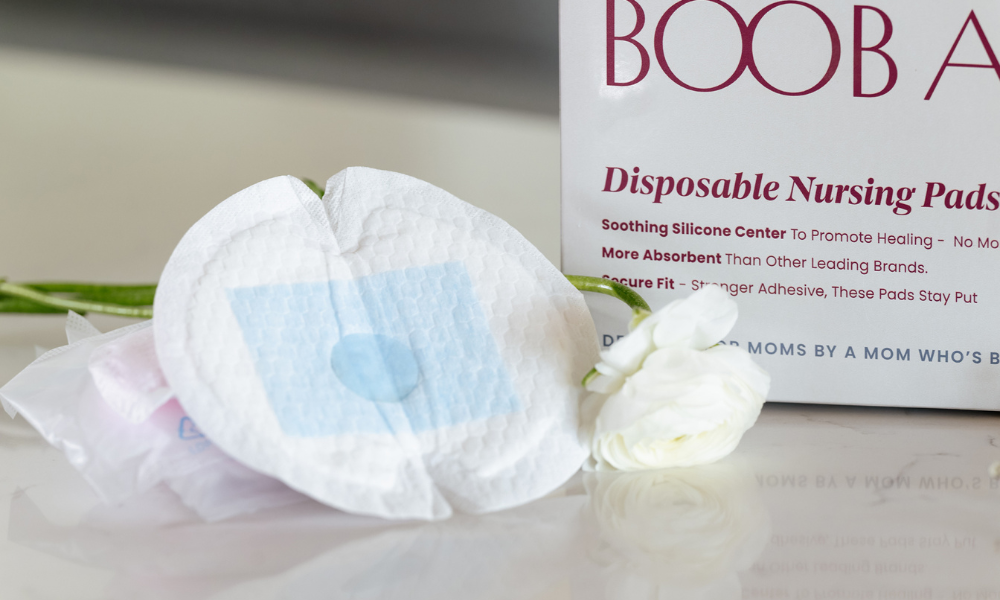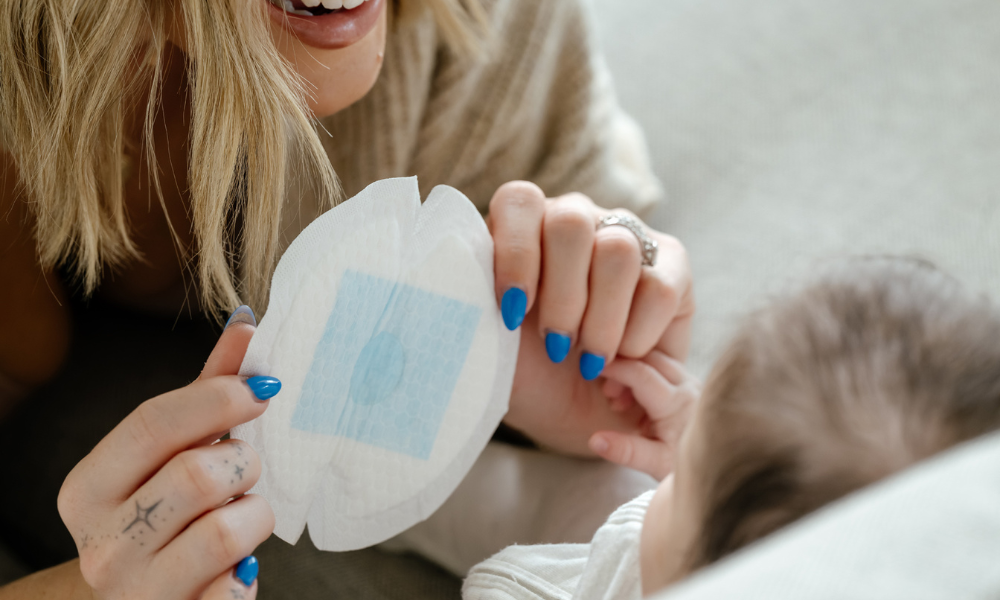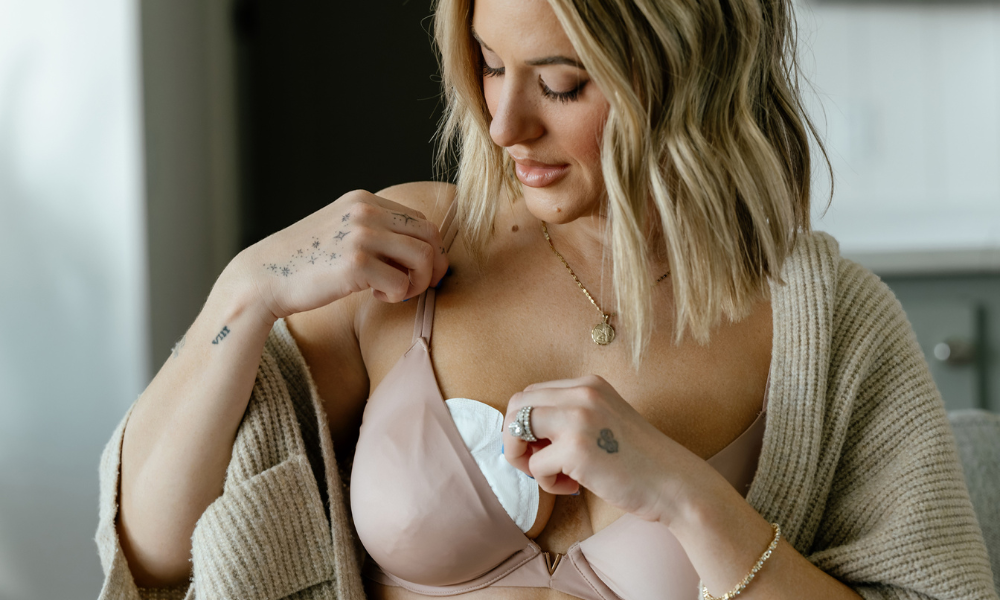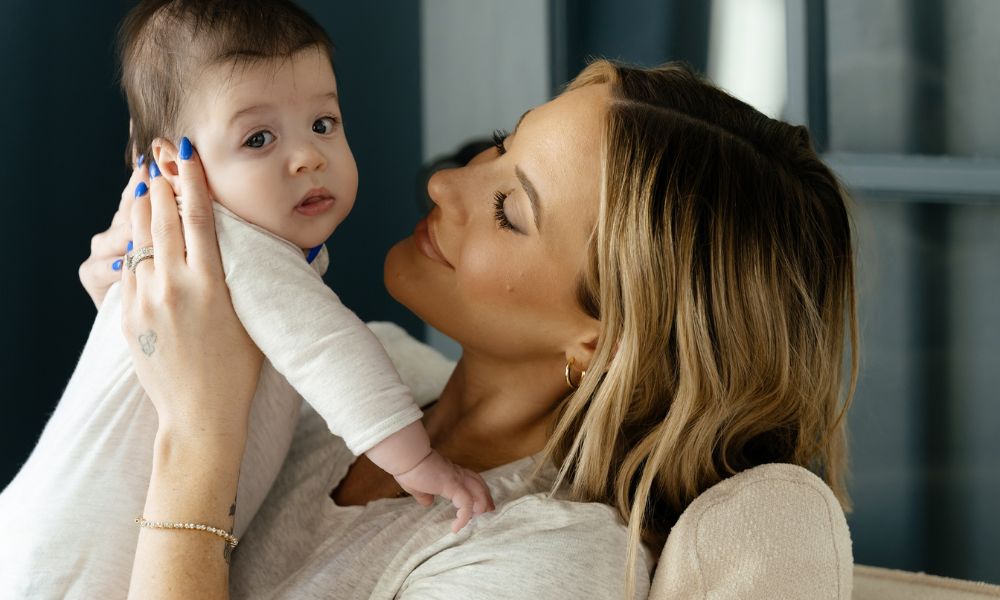(A Leaky Love Story, Told Mom-to-Mom)
Before I had a baby, I thought I had a decent grasp on what to expect. I read the books, took the classes, bought the gear. But no one warned me about the leaks.
One day I was running errands — baby in the car seat, iced coffee in hand — when I heard a baby crying in the checkout line. Not my baby. Still, within seconds, my shirt told a different story: soaked. Right there, under the fluorescent lights, was the moment I truly understood what nursing pads were for.
If you’re wondering how nursing pads work or just trying to figure out what the heck they’re supposed to do, you’re not alone. Let’s break it all down — casually, clearly, and mom-to-mom.

What Are Nursing Pads (and Why You Need Them)?
Nursing pads are soft, absorbent inserts that fit inside your bra. Their mission? To catch leaking breast milk before it ends up on your clothes, your bedsheets, or your favorite white tee.
They help:
- Keep your clothes dry and stain-free
- Prevent that cold, clammy feeling from damp fabric
- Protect sore or cracked nipples from friction
- Boost your confidence in public (goodbye, surprise spots)
Why do you even leak?
Breast milk leakage is super common. It happens:
- When your milk is regulating in the first few months
- During a let-down (aka when your body releases milk)
- When your baby sleeps longer than usual or skips a feed
- Even just from hearing a baby cry — seriously, it’s a thing
So yes, nursing pads are more than a suggestion. They’re an essential part of the breastfeeding toolkit — especially in the early days.
How Traditional Nursing Pads Work (and Their Downside)
Traditional nursing pads — you know, the disposable kind that come in a box from the grocery store — are typically made of absorbent cotton or synthetic material. They usually have a sticky backing that attaches to your bra to stay in place.
Here’s how they technically work:
- You place the pad inside your bra, with the absorbent side facing your skin.
- As your milk leaks, the pad absorbs it before it reaches your bra or shirt.
- Once saturated, you toss it and replace it with a new one.
Sounds simple enough, right?
Well, kind of.
The downside of traditional nursing pads:
- They get soggy fast
- The adhesive backing can shift, bunch, or fall off entirely
- They feel damp and itchy against your skin
- They absorb everything — including your nipple ointments
- You end up changing them constantly (like, every hour on heavy days)
That’s why after two weeks of awkward wardrobe changes and wasted nipple cream, I started searching for something better. And that’s when I found Boob Aid Nursing Pads.
How Boob Aid Nursing Pads Work (AKA: The Game-Changer)
Boob Aid wasn’t created by a faceless brand. It was made by a mom — one who had leaky moments just like mine. And instead of settling for soggy cotton pads, she said “There has to be a better way.”
Turns out, there is.
Here’s how Boob Aid Nursing Pads work — and why they’re totally different:
1. Patented Healing Reservoir
Boob Aid’s pads include a clever little feature that’s a total lifesaver: a healing reservoir that holds ointments like lanolin or nipple balm right where you need them. No absorption, no waste — just healing where it belongs.
2. Breathable Silicone Design
These aren’t cotton. Boob Aid pads are made from soft, medical-grade silicone that’s cooling, gentle, and breathable. That means no sticky, wet feeling. Just comfort.
3. Superior Leak Protection
The smart structure wicks milk away from your skin and locks it in, keeping you dry way longer than disposable pads. You won’t have to change them every hour — or even every few.
4. No Adhesive Required
Boob Aid pads naturally grip to your skin and bra without sticky strips. They stay in place — whether you’re nursing, pumping, chasing a toddler, or curled up binge-watching reality TV (because balance).
How to Use Nursing Pads (Step-by-Step)
Whether you’re new to the nursing game or just switching from disposables to Boob Aid, here’s how to make it work:
Quick & Easy Guide:
- Start with a dry breast.
After nursing or pumping, gently pat your breast dry. Moisture invites irritation, and dry skin helps the pad stay in place. - Apply your cream, if needed.
If you’re using ointment, go ahead and apply a thin layer now. Boob Aid’s healing reservoir will keep it there — instead of absorbing it into the pad. - Place the pad directly over your nipple.
No stickers, no fuss. Just position the pad and let the silicone do its job. - Adjust as needed.
Make sure the pad is sitting flat and comfortably. You shouldn’t feel it moving around or pressing in. - Change when needed — but not constantly.
Thanks to Boob Aid’s long-lasting protection, you’ll likely change far less often than you would with traditional nursing pads.
Pro Tips: Making the Most of Nursing Pads
- Change your pads regularly.
Even with the best pads, if they feel damp — switch them out. - Use at night.
Overnight leaks are real. Slip on a pair before bed and thank yourself at 3 a.m. - Keep extras nearby.
Stash pads in your diaper bag, car, purse, and bedside table. Trust me. - Combine with a comfy nursing bra.
Soft, wireless bras help hold your nursing pads in place and keep you comfortable all day long.
Nursing Pads Are More Than Just a Convenience
If you’ve been wondering, “How do nursing pads work?” the short answer is: they save your shirt. But the long answer? They protect your skin, boost your confidence, and help you move through the rollercoaster of breastfeeding with a little more ease.
Yes, traditional pads will do the job. But if you want pads that actually support healing, offer real comfort, and don’t need constant changing, Boob Aid Nursing Pads are the upgrade you didn’t know you needed.
They’re discreet. Effective. Designed with your comfort in mind. And made by someone who truly gets it.

FAQ: Nursing Pads 101
1. Do I need nursing pads even if I’m not leaking much?
Yes — especially in the early days. Even small leaks can cause skin irritation or stain clothing. Nursing pads help you stay dry and comfortable, even if you’re not soaking through.
2. How often should I change my nursing pads?
With traditional pads, you’ll likely need to change every 2–4 hours. With Boob Aid, most moms find they can go much longer between changes thanks to better leak control.
3. Can I use nipple cream with nursing pads?
With Boob Aid Nursing Pads — absolutely. The patented healing reservoir keeps creams in place, helping your nipples heal without wasting ointment or ruining the pad.
4. Are nursing pads reusable?
Boob Aid Nursing Pads are disposable for hygiene reasons but designed for longer wear than traditional pads, which means you’ll use fewer each day.
5. Can I wear nursing pads overnight?
Definitely. Boob Aid’s comfortable, secure design makes them perfect for overnight protection — no bunching, no leaks, no drama.
Ready to feel confident and comfortable while breastfeeding?
Try Boob Aid Nursing Pads and see what a difference the right support can make.
Visit BoobAidNursingPads.com — Because you deserve more than soggy cotton.
Read More

How Do Nursing Pads Work?

How Many Nursing Pads Do You Need in a Year?

How Long Do You Need Nursing Pads?

8 Hacks to Make Breastfeeding More Comfortable




